And so my seeking has led me to awareness enhancing journeys through the coastal Tel Aviv, the Italian Apennines, the French Riviera and Hendaye, the English Countryside. It was while spending some time with elderly British folks in my last travels that I heard about the island of Cyprus: a small troubled place shrouded in mystery, intimately connected with the birth of the Greek Goddess of Love and the birth of the Christian Orthodox church. Following some preliminary research, it dawned on me that both Aphrodite and graceful Mary would need to be dressed à la mode in order to fit in in modern day Cyprus. Not that I care too much for appearances you see. But wishing to blend in with the crowds, I spent the winter at my chilly home awaiting the unappealing molting of my pelage to take its course before setting off for the sunny island. Come springtime, all dapper in my new velvety plumage, I was ready for my next adventure!
According to the historical data I gathered, in 1974 there was an invasion of Cyprus from neighbouring Turkey, which resulted in the occupation by Turkish military forces of one third of the island. Given my overly busy schedule, I decided to focus my visit on the island's capital, Nicosia, a city fated to be crossed by a green line separating it into two communities, the Greek Cypriot (GC) and Turkish Cypriot (TC). The sad truth is that the island has seen too many conquerors throughout the years. Οne can find traces of a range of civilizations in Cypriot culture, the indigenous dialect, its cuisine and architecture.
In view of the fact that no other nation except Turkey recognizes the occupied North, I arrived in the GC section, with plans to pierce through the dividing line and observe both populations. Luckily for me, a recent opening of an old street that spans through both communities made my plans trouble-free, thus my dagger, flash light and camouflage garments remained unused. On a sunny morning, I found myself entering the Venetian walls into the old town. After walking for about a kilometre, I found myself in front of the so-called green line. There, a sign written in Greek, English, French and German informs the visitor: Nicosia, the last divided capital in the world.
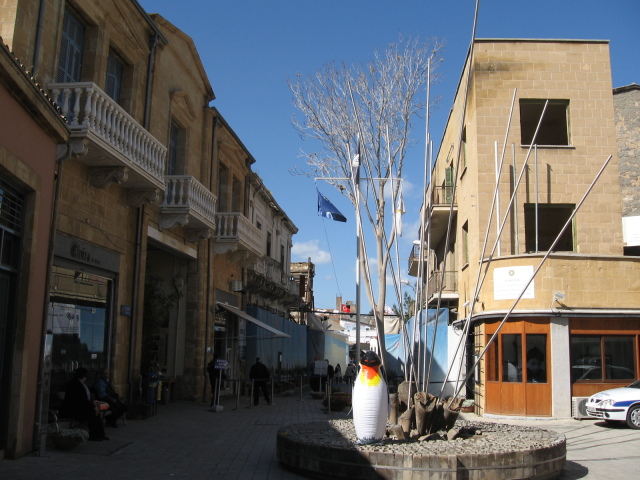
I showed my passport to the police officers to let me cross, and while in line I realized that both TC and GC were showing their passports in order to pass from one part to the other. What a peculiar arrangement within one's own country!
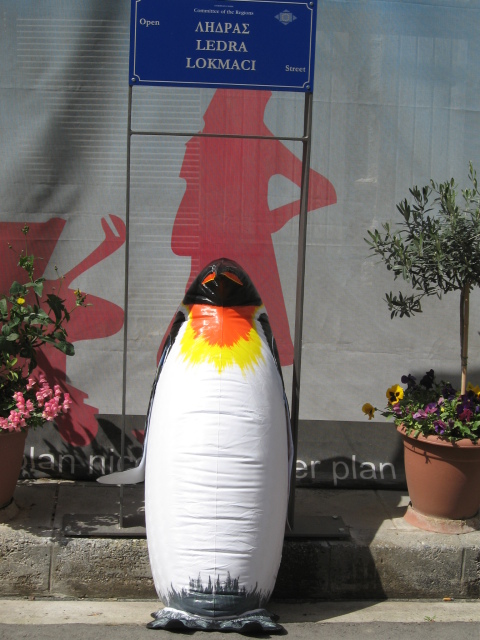
I found the TC section of the city to be much quieter and less populated than the GC section. The Gothic cathedral of Agia Sophia (Holy Wisdom) impressed me by its size, (no wonder it took 125 years to build!) but was never actually completed due to constant occupations and wars. In 1570, when Nicosia was (yet again) captured by Turks, it was turned into a mosque and the frescoes that decorated the interior were painted over. Today it is known as the Selimiye mosque, and continues to be an architectural ornament on the heels of Pentadactylos Mountains.

Something I had heard about this island is that, for the most part, TC and GC lived peacefully alongside one another and each respected the other's religion before the invasion in 1974. While that generally holds true for certain villages and small communities, the big powers of the time wanted the two communities to remain divided and would incite nationalistic sentiments to excite them against each other. For example, when the British took over the government of Cyprus as a protectorate from the Ottoman Empire in 1878 to turn it into a Crown Colony in 1925, it served their own interests to keep the TC and GC fighting each other. Otherwise both communities would have joined together to fight the invading Queen's army.
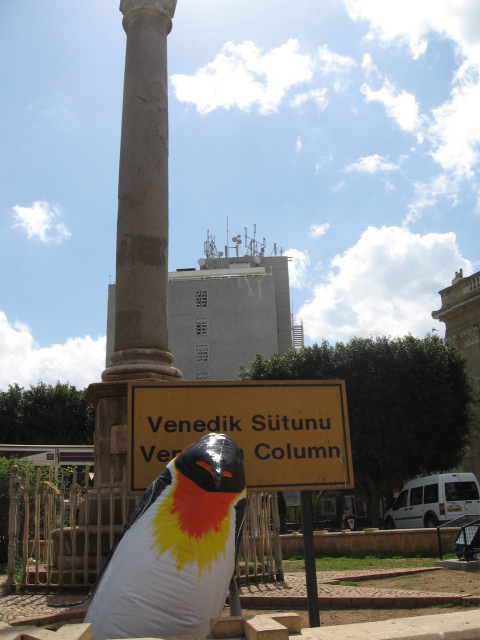
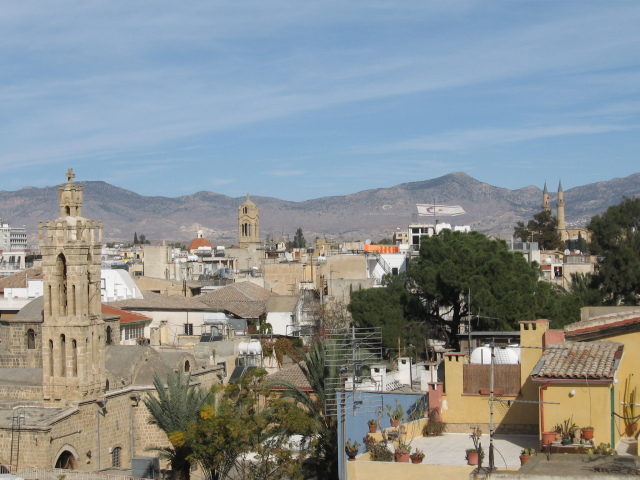
I kept walking under the bright sun with heavy thoughts in my mind. You must understand that in the subzero temperatures of my homeland, life is deemed as sacred and counts a great deal. The human beings however do not seem to appreciate it. They are ready to take each others' lives simply because their religious leaders tell them that their God is so much better than all other deities, or if their political leaders convince them that their skin colour or claim to the land where they were born makes them somehow more speshul than all other peoples. In the deep waters where my race spend much of their time, we know instinctively that predators lurk in the shadows ready to turn us into their next meal. What happened to human beings and their own instincts? Why can't they smell the subhuman predators under the mask of the spiritual leader or the party leader, then protect themselves and, most importantly, their chicks, from a gloomy fate?
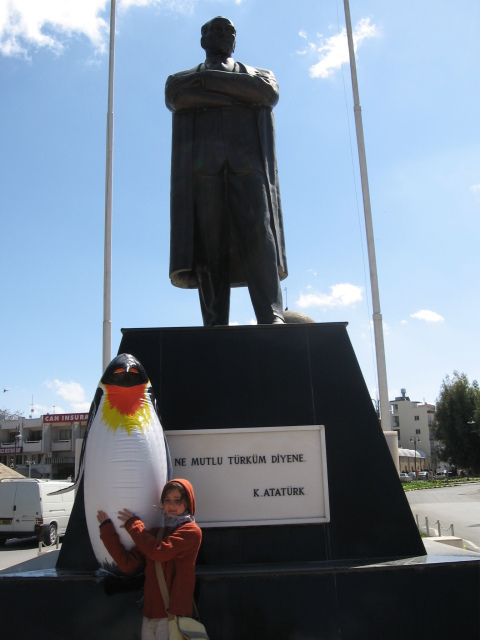
When I saw Mustafa Kemal Atatürk's statue - the founder of the Turkish Republic - with his quote below it, "Ne mutlu türküm deyene (I am proud to be a Turk)", the same inscription that was provocatively carved on Pentadaktylos mountains, mocking the GC refugees who can see their villages on the mount slopes, but know they cannot visit them, I began to feel really dizzy. Was it the sun, the strong wind that had begun to blow, my empty belly or my leaden thoughts on the inconsequential vanities for which human beings fight and loose their lives? I don't know. But a newly found friend helped me stand next to Monsieur Kemal for a photo shoot; he is after all an important figure for the Turkish nationals. The same friend later escorted me to what appeared to be a health-provider service, and I was given the "kiss of life" by a kind young man who used a small plastic pipe to blow breaths of fresh air into my tired body. Feeling much better, I stopped at a local bar where I treated my friend to hot chocolate, and hoped to indulge myself in a glass of the local wine to help restore my normally ruddy complexion. Unfortunately, only wheat nectar was available, to which I have an aversion.
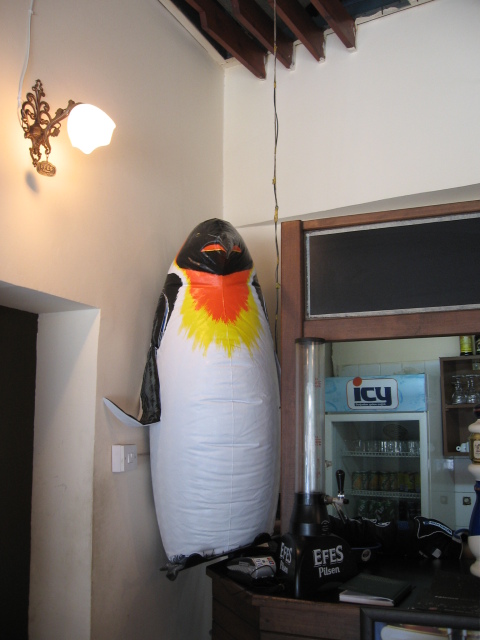
Outside, the sun was reaching its Zenith so I ventured onwards with my tour of the city, selecting a different check point from which to leave occupied Nicosia and enter the so-called Free Zone. But how free is it really?
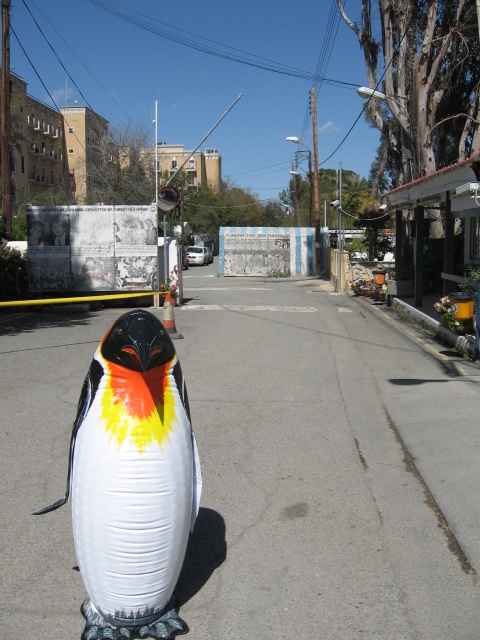
For a city that saw much fighting and colonisation, the word freedom is displayed remarkably often - in every corner you turn to be precise. In the main Eleftheria's square (Freedom Square) a fun little red train appealed to my weary feet. It dropped me off at the statue of Freedom, a striking sculpture situated over the Venetian walls, that depicts Freedom as a female figure standing tall and commanding the release of those imprisoned. The prison gates open and the people eagerly come out into the light.
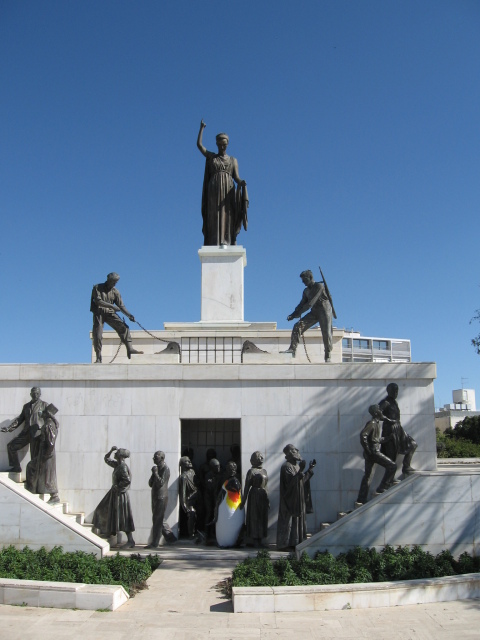
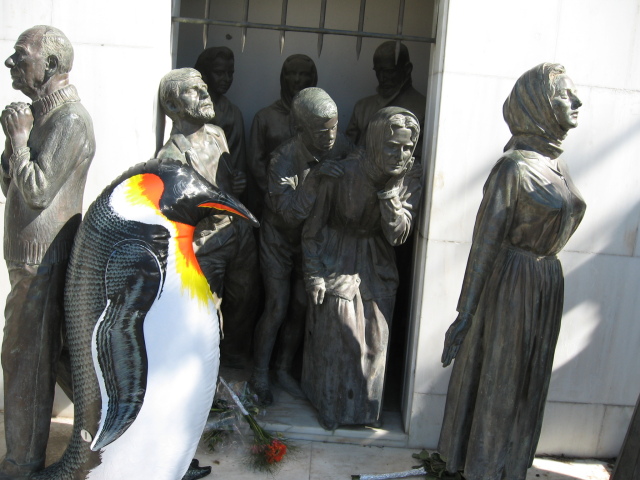
Musing on the divisive state of affairs in segregated Nicosia, the Cypriot poet Kostas Montis captured the islanders' present fixation on freedom in a poem entitled Standing In Front Of The Cage's Open Door:
It is the same poet who urgently exclaimed on paper:
Because without fail we will continue shooting
The "free" Cypriots, those residing on the Greek sector of the city, are apparently immersed in materialism, a solution they adopted as a defence mechanism against seeing their helpless condition at the hands of sinister forces, and thus relieving them of the responsibility to ever act for change.
The Ledras Street is now toppled with all kinds of shops and remains one of the busiest streets on the island. My consumer-impulse was tickled, I must admit, when I saw a Pokémon balloon, but I found the strength to resist and remained faithful to my mission to survey the city and pass unnoticed. On this point, my big nose and dark colour were not much unlike the facial features of the locals, and my "velvety coat" gave me the appearance of a rather chic fellow indeed!
To evade the consumer's urges, I slipped into the narrow picturesque streets of Laiki Geitonia (Traditional Neighbourhood), restored by the municipality to its original neoclassical architecture, and now a popular tourist destination. Retaining its romantic atmosphere of bygone eras, Laiki Geitonia is a safe haven away from the noise and pollution of the city (materialism in Cyprus is also expressed in the fact that it has the highest number of cars per capita anywhere in the world!) even while lying deep in its heart.
A grey parrot, who immediately befriended me, whispered to me where I might seek a decent meal of fresh raw fish. He also indicated that Nicosia had a bunch of churches worth visiting. Furthermore, without seeming pompous, he matter of factly informed me that the island holds top place in the world as the nation with the most churches per square foot. Feeling inspired, I dragged my feet to visit a few of them - there were just too many! - accompanied by my Grey friend who volunteered to film my pilgrimage.
The church dedicated to Archangel Michael (Tripiotis Church, as it is known by the locals) was built in 1695 in a Franco-Byzantine style. Across from it lies the Saint Savvas church, and further down, the Phaneromeni church, the biggest temple in town, which was built in 1872. A marble mausoleum lies in its back yard, which contains the relics of bishops and priests executed by the Turks in 1821, when a pan-Hellenic uprising occurred, ending 400 years of Ottoman occupation. The results were favourable for the Greeks, who ultimately retrieved their land and freedom, but Cyprus had to wait, and still does, for its long sought Freedom to arrive.
My resting place lay in the outskirts of Nicosia, where I came out through the city walls, built by the Venetians almost 500 years ago, which encircle the old city and are adorned with eleven heart-shaped bastions. Beyond, the city expands outwards, wearing a modern face of tall glass-and-cement buildings, broad roads and traffic. I hurriedly skipped this part, as the sun was already heading westwards. Far from the hectic capital, a field full of bright yellow daisies had my name written all over it. (No joking here! I swear it spelled P-E-N-N-G-U-I-N-N!) I asked the gracious flowers' permission, which was granted me, and rested for a while among their sweet smelling stems. One thing that my homeland misses, to our loss, is the beautiful plant-organisms called flowers.
Many wars in Cyprus were fought in spring. I could not conceive fighting amidst this blooming splendour of nature. No member of the Aptenodytes Forsteri could do so and neither could a human being. But there exists a subspecies of psychopathic being that can and does conceive of such barbarity: their only "creativity" lies in painting the earth red from the blood of the innocent; their "intelligence" lies in creating myths and stories that divert the gaze of humanity from the Truth of the situation, the Truth of their reality.
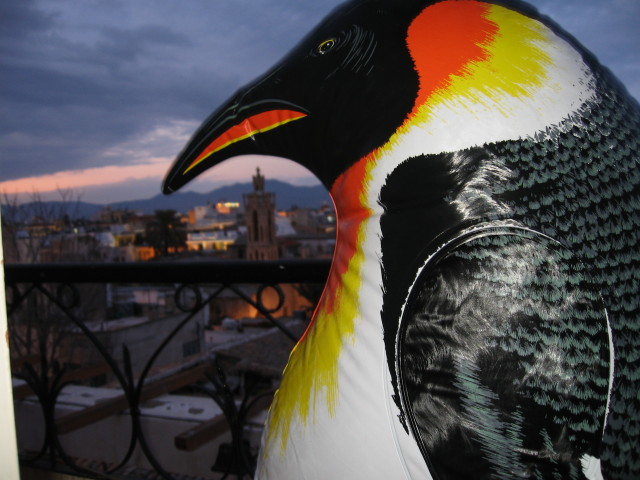
Alas, my trained eye can not only distinguish the shades of white but the shades of darkness too. I had just spent my day amongst two communities of people who have so much in common, yet psychopathic ideologies keep them walled and forever separated. And I could see the walls that surround Nicosia expand further and wider to captivate the hearts and minds of the people; in the Middle East, in Asia, Europe, Africa and the Americas. These walls are built in the dark, while people are asleep and the constructors are working in silence, so that humans never realize what is done to them. Will humanity wake up to reality before real walls fence them in? Would falling stars be bright enough and loud enough to arouse them from their slumber? A Penn Guinn can't help but wonder...
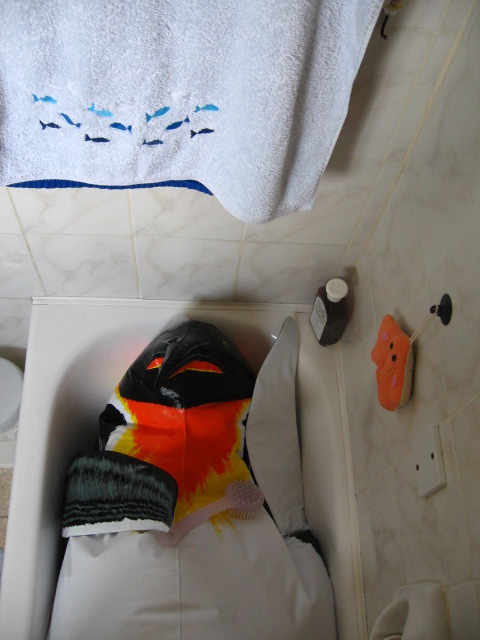
Optimism however, can always be partially retrieved with a relaxing hot bath. As the water washed my blues away, a brighter thought lightened my mood: down through the ages of the sorry history of this planet, there have arisen seekers of Truth and Dragon Slayers. Their selfless actions and arduous work might have not changed the course of the world, but it is they who illuminate the dark passages of history, revealing to others the way out.
Long live the Dragon Slayers!
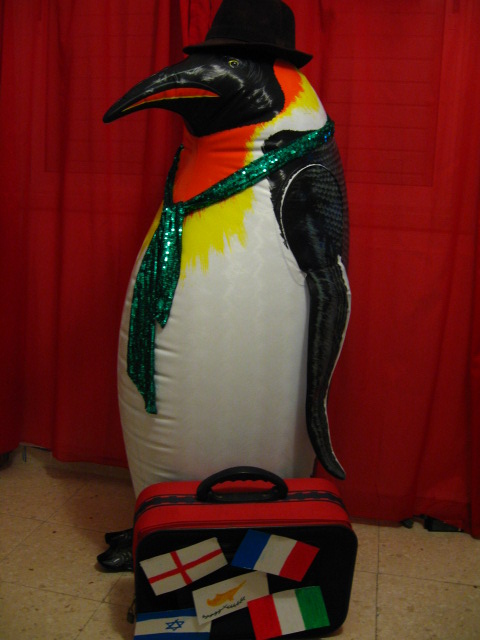
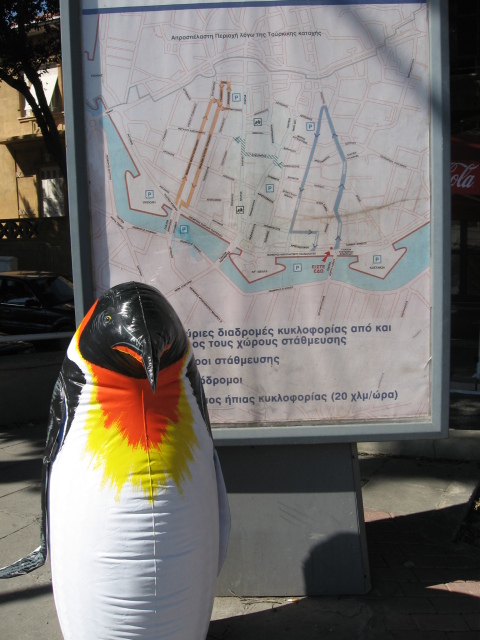
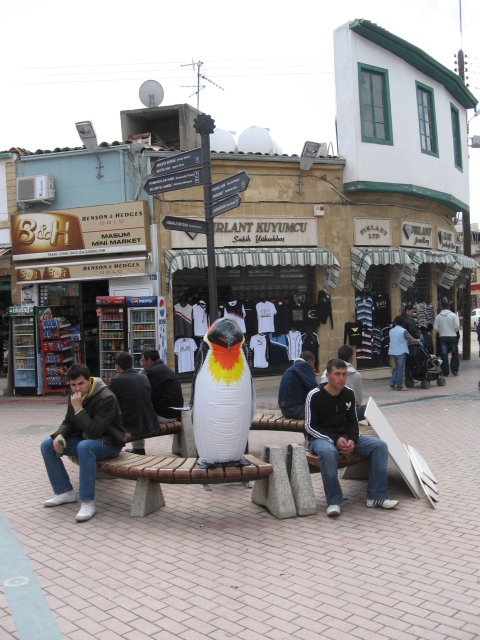
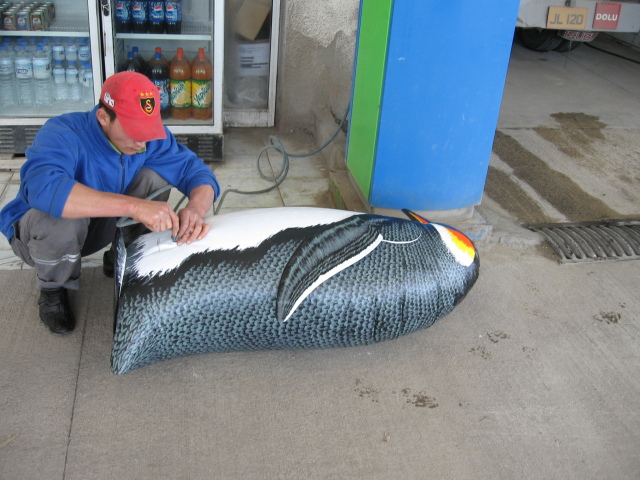
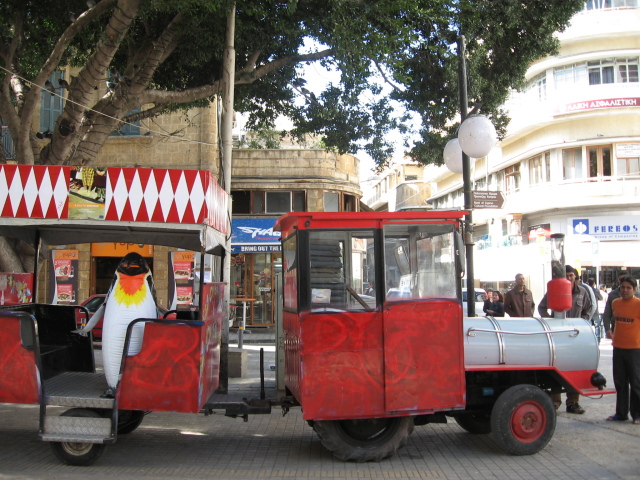
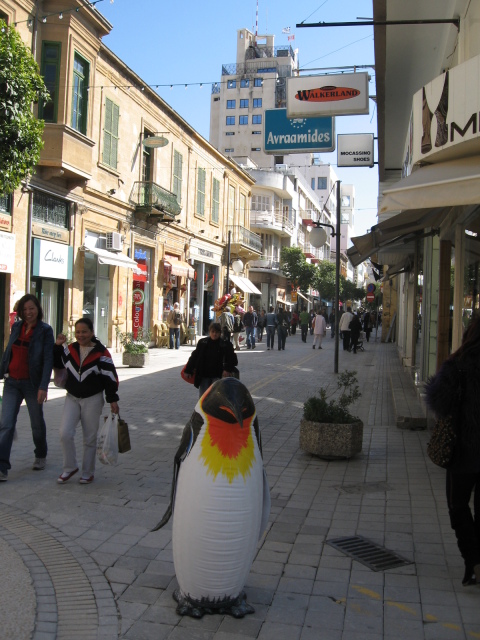
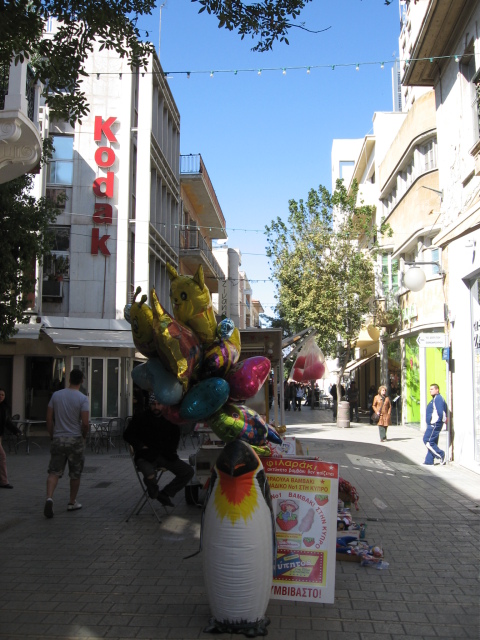
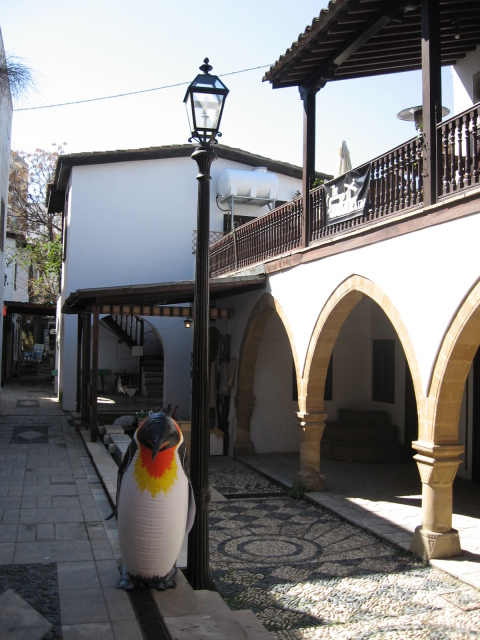
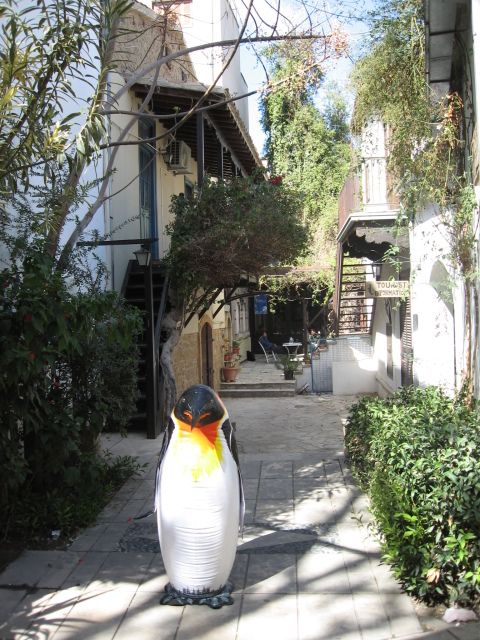
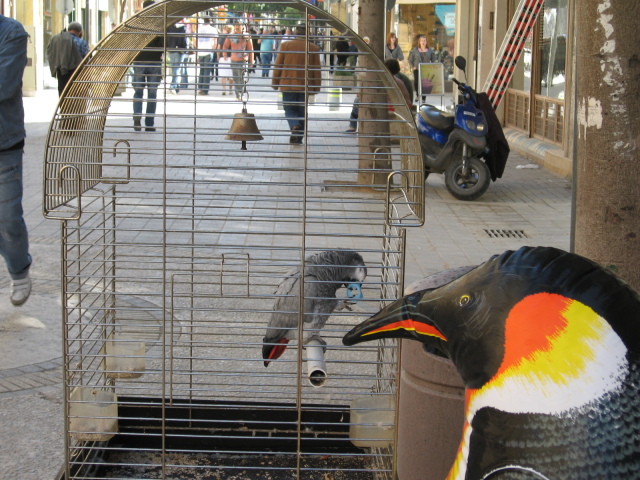


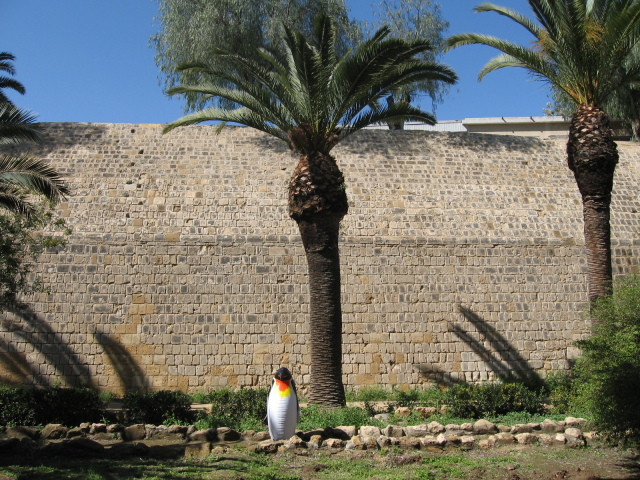
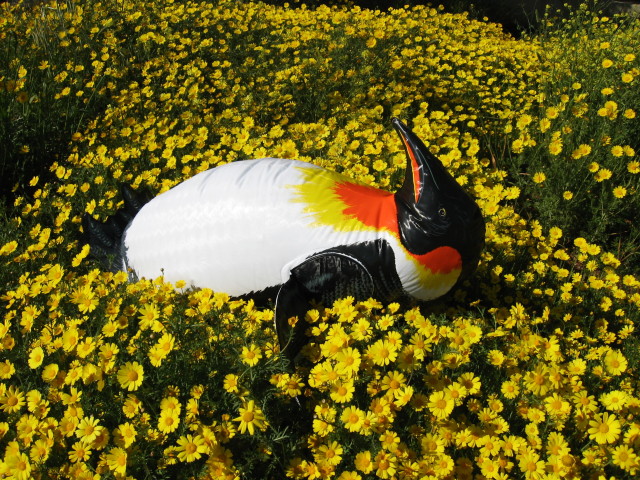
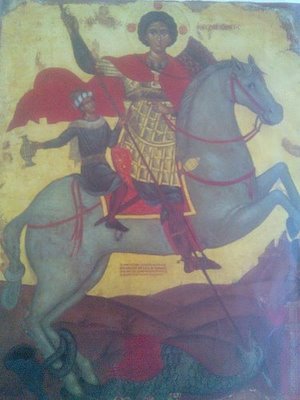



From the esteemed Penn Guinn and friends. Thank you very much!